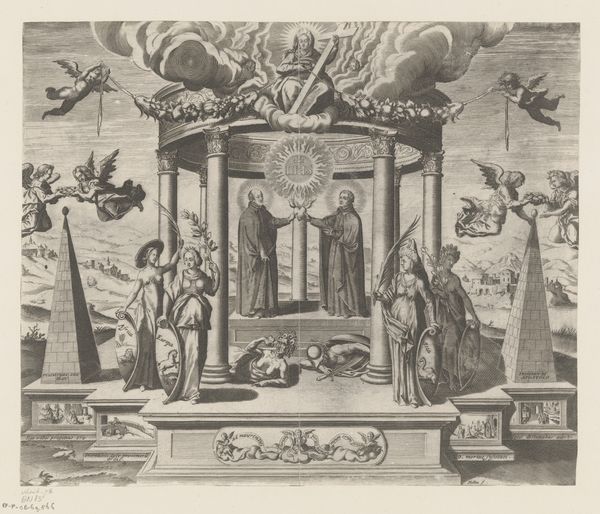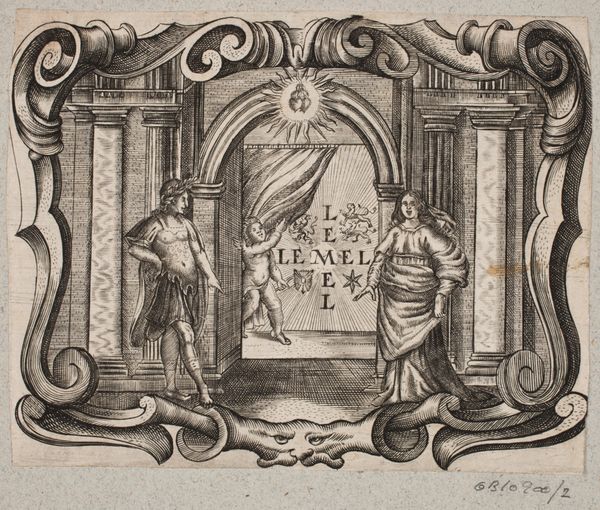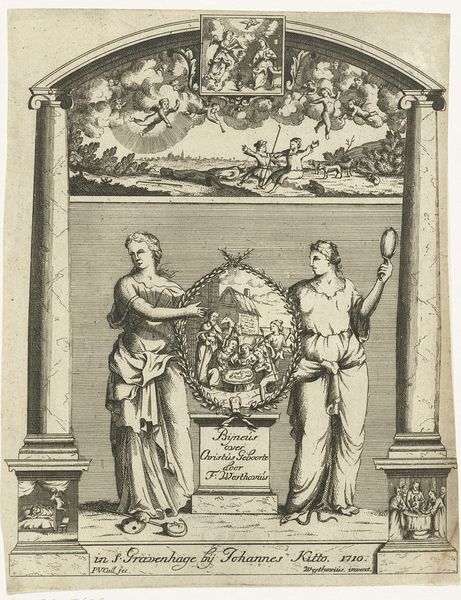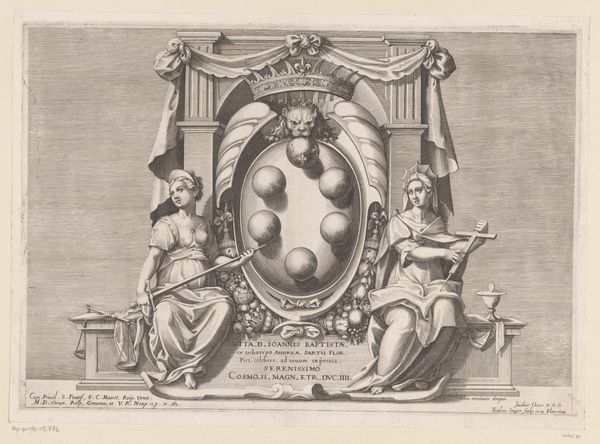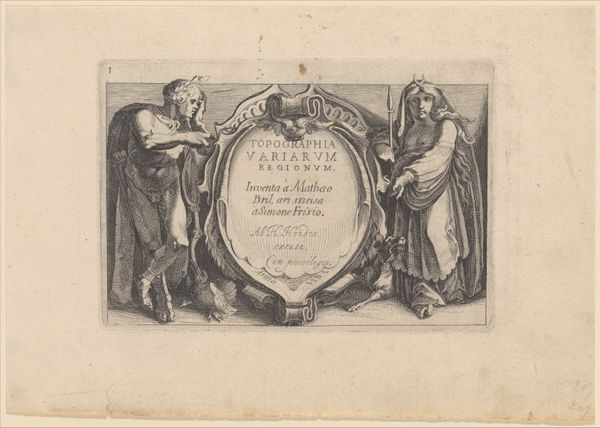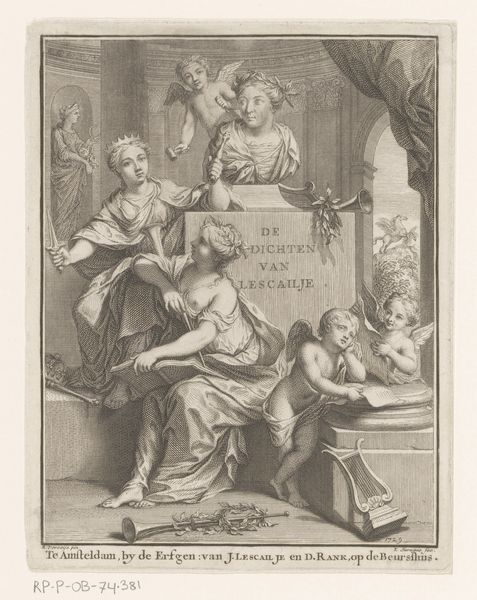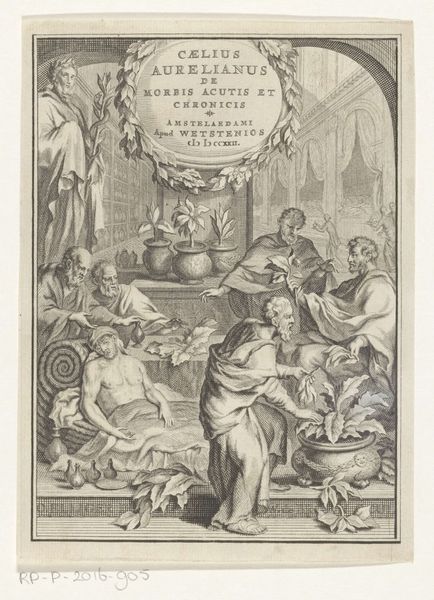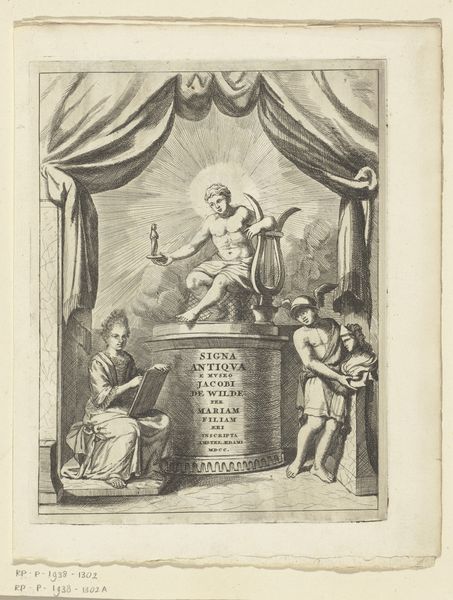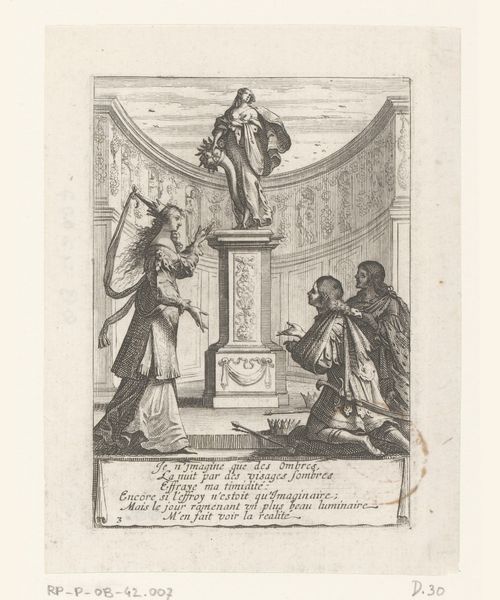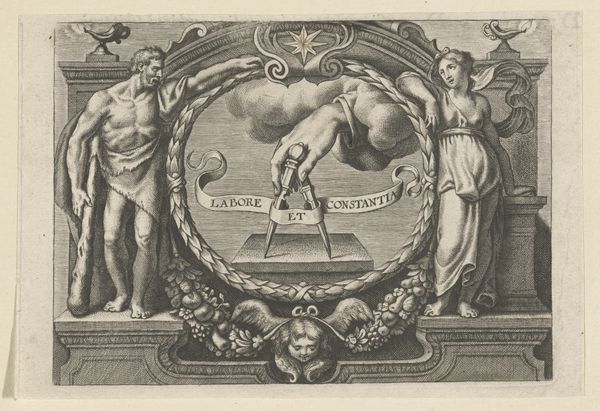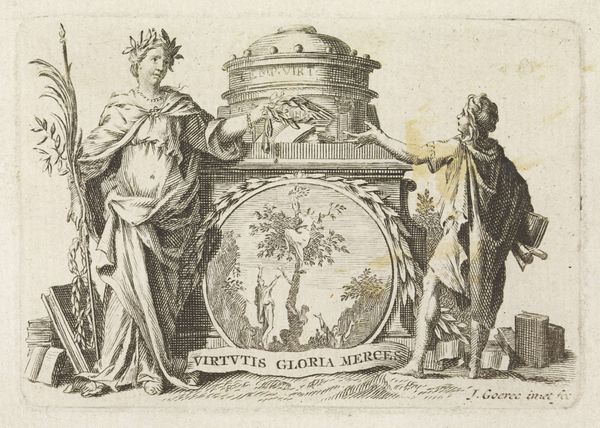
engraving
#
portrait
#
allegory
#
baroque
#
caricature
#
portrait reference
#
history-painting
#
engraving
Dimensions: height 361 mm, width 435 mm
Copyright: Rijks Museum: Open Domain
Editor: Here we have Grégoire Huret’s 1638 engraving, "Portret van Claude Bouthillier," currently held at the Rijksmuseum. It's quite intricate, with many symbolic elements framing the central portrait. What historical narratives do you think are at play here? Curator: Well, look at the allegorical figures, the architectural backdrop, even the dog – everything is meticulously placed to convey power and status. How does this official image intersect with the realities of the time for, say, women, peasants, or colonized populations who wouldn't have enjoyed such elevated positions? Editor: So, it's about unpacking the image's intent versus the lived experiences of people at the time? Curator: Precisely. This is more than just a likeness. Huret's portrait functions as propaganda, carefully constructing an image of Bouthillier. We have to consider how power operates in this construction: what stories are told, and more importantly, whose stories are left out? How does the depiction of Bouthillier contrast with the experiences of those subjected to his authority? Editor: That makes you look at the piece quite differently. It seems less like an individual portrait and more like a statement of dominance. What's your interpretation of the classical imagery? Curator: The classical elements are carefully chosen. They deliberately evoke notions of tradition, intellect, and legitimacy. In a way, Huret links Bouthillier to the lineage of great rulers and thinkers. It begs the question: whose values and aesthetics are being centered here, and what is the impact of that choice? Is this intended to convey the message of social order and divine right, effectively excluding the perspectives of marginalized communities? Editor: So by examining it critically, we can start to see not just the glorification of power but the system that upholds it. It encourages viewers to challenge conventional notions of authority. Thanks, that really opens it up for me. Curator: Absolutely, seeing the art as an ongoing negotiation can empower us to reshape those dynamics.
Comments
No comments
Be the first to comment and join the conversation on the ultimate creative platform.
